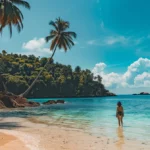Explore Southeast AsiaSoutheast AsiaExplore Southeast AsiaPenangExplore Southeast Asia
Traveling to Southeast Asia doesn’t have to break the bank. You can explore stunning destinations like Krabi, Inle Lake, Manila, and Sa Pa without overspending. This blog post will provide you with practical tips for planning your budget-friendly journey, creating an economical itinerary, and saving money on the road. By addressing common challenges, such as finding affordable accommodation and transportation options, I aim to help you maximize your travel experience while staying within your budget. Let’s get started on making your Southeast Asia adventure both enjoyable and affordable.
Planning Your Budget-Friendly Southeast Asia Journey
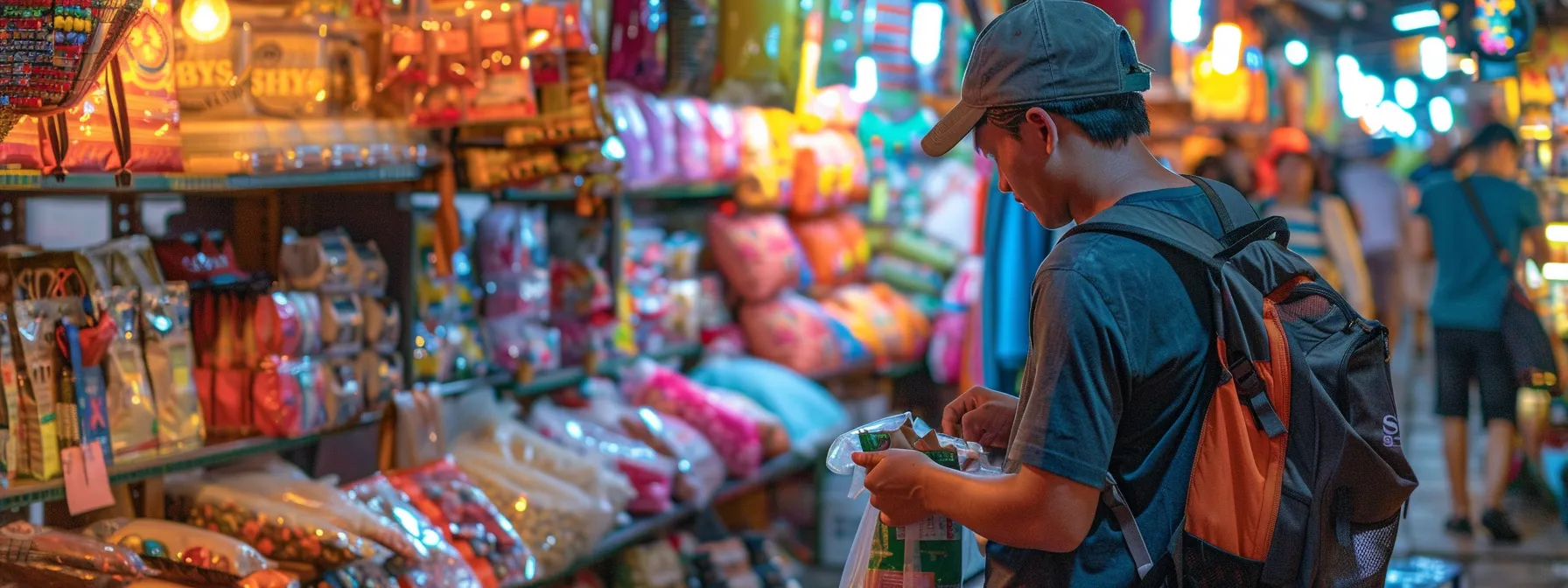
In planning my budget-friendly journey through Southeast Asia, I focus on a few key aspects. Setting a travel budget that works for me allows for both exploration and financial comfort. I also consider the most affordable travel seasons to maximize my experiences, while ensuring I have all essential documents and visa requirements. Packing strategically for a culture-filled adventure helps, especially when considering bathroom options and camping. Lastly, I prioritize finding the best deals on flights and transport to make the most of my trip to various world heritage sites and fascinating caves.
Setting a Travel Budget That Works for You
When setting a travel budget for my journey through Southeast Asia, I prioritize understanding the local currency dynamics and average costs in each country I visit, such as East Timor and Cambodia. For example, Explore Traveler visiting Angkor often requires budgeting for entrance fees, while exploring the Gili Islands may involve additional travel costs for boat transfers. I also include a cushion for unexpected expenses, like a gibbon tour or last-minute accommodations, ensuring that I can fully enjoy my travels without financial stress:
- Understand local currency values.
- Research average costs at destinations like East Timor and Angkor.
- Include potential fees for activities such as gibbon tours.
- Plan for transportation expenses between locations, like the Gili Islands.
- Add a cushion for unexpected costs.
Choosing the Most Affordable Travel Seasons
When I plan my journey through Southeast Asia, I pay careful attention to the seasons. Visiting during the off-peak times, like between May and October, can significantly reduce costs on accommodations and activities, allowing me to allocate more of my credit toward experiences rather than expenses. Additionally, it’s wise to be cautious about theft, particularly in crowded areas, so I ensure my gear is not only practical but also secure while I explore vibrant cities like Hanoi and enjoy local terraces:
Essential Documents and Visa Requirements
When preparing for my budget-friendly journey through Southeast Asia, I prioritize obtaining the essential documents and understanding visa requirements. For instance, while traveling to Thailand, it is crucial to have a valid passport and check visa regulations; many nationalities can enjoy visa-free entry for up to 30 days. I make sure to carry sufficient Thai baht for expenses on the vibrant Khaosan Road and prepare for adventures at destinations like Khao Sok National Park, where I often find a comfy hammock to relax in after a day of exploring. Additionally, if I plan to visit cultural sites like Wat Phra That Doi Suthep, I ensure I have any necessary permissions lined up to avoid hiccups in my itinerary.
Packing Tips for Southeast Asia on a Budget
Packing efficiently for my Southeast Asia adventure helps me stay within my budget while ensuring I have everything I need. I recommend choosing a lightweight suitcase or backpack that fits economy class restrictions, as this minimizes baggage fees and simplifies transport. I always carry a small amount of cash, especially when visiting local markets or attending events like the Full Moon Party, where credit cards may not be accepted. Explore South East Asia
- Select a versatile wardrobe with quick-dry clothing.
- Pack essential toiletries in travel-sized containers.
- Bring a reusable water bottle to save on hydration costs.
Finding the Best Deals on Flights and Transport
To find the best deals on flights and transport during my Southeast Asia travels, I leverage fare comparison websites and apps that allow me to track price fluctuations for destinations like Chiang Mai and Boracay. Utilizing budget airlines helps me save money while reaching iconic locations, from the stunning landscapes of Mount Kinabalu to the charming streets of Kampot. Additionally, I opt for local transportation options such as buses and trains, which not only reduce costs but also provide a chance to experience the region’s beautiful karst scenery up close along the way.
Creating an Economical Southeast Asia Itinerary
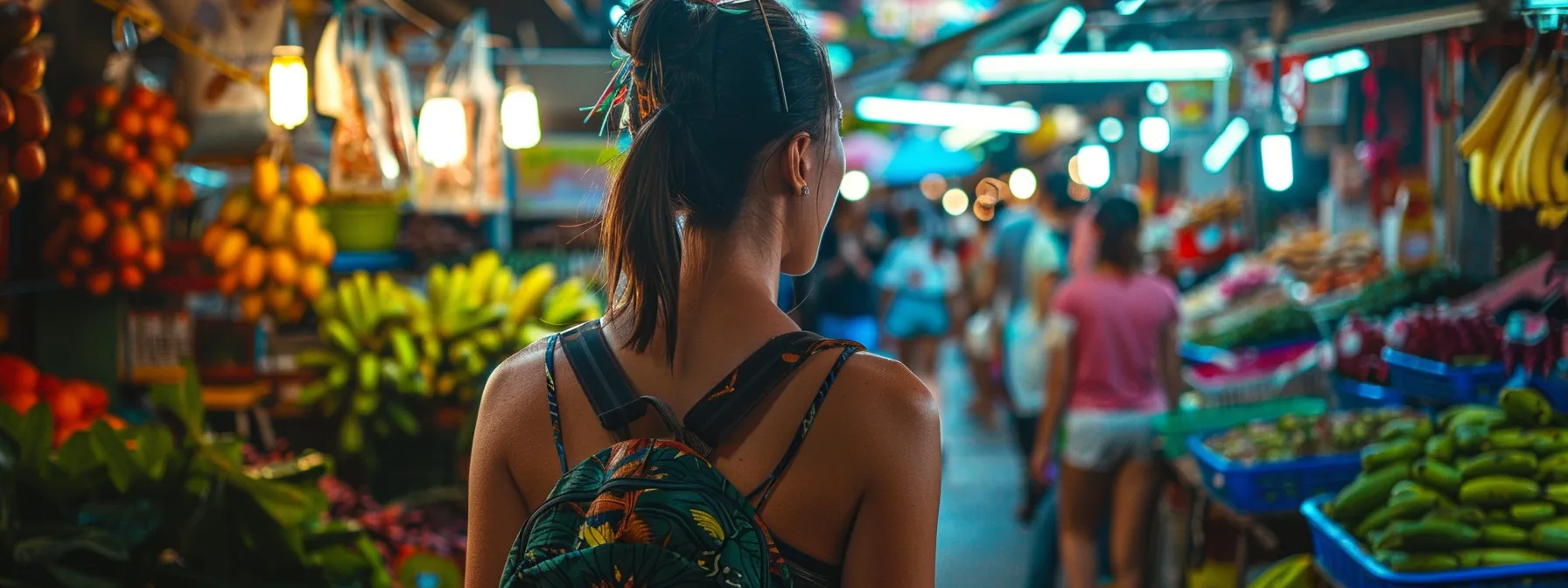
In creating my economical Southeast Asia itinerary, I focus on top budget-friendly destinations like Cebu and the Phi Phi Islands. Efficient route planning saves money and time, while affordable accommodation options ensure comfort without overspending. I also explore off-the-beaten-path locations, balancing my time between vibrant cities and serene rural areas. Additionally, I prioritize obtaining health insurance to protect my travels.
Top Budget-Friendly Destinations to Include
As I craft my itinerary for Southeast Asia, I always include destinations that offer both culture and natural beauty while being budget-friendly. Yangon, for instance, provides an affordable glimpse into Myanmar’s rich heritage with its stunning pagodas and vibrant markets. A visit to Brunei allows me to enjoy its unique culture without breaking the bank, while exploring the pristine waters around the islands reveals incredible marine life that makes snorkeling or diving a delightful and economical experience. I also love trying local coconut delicacies, which often help me explore the local cuisine without a high income requirement.
Efficient Route Planning to Save Money
When planning my route through Southeast Asia, I prioritize efficiency to save money and maximize my experiences. For instance, traveling from Vientiane to Sandakan allows me to explore unique destinations while avoiding backtracking, which can incur additional transport expenses. Moreover, I take into account the inherent humidity in this region, choosing to travel during the cooler months to enhance my comfort while enjoying the local cooking classes and cultural events available in various cities:
- Choose direct routes to minimize transportation costs.
- Consider local cooking classes for budget-friendly dining experiences.
- Be mindful of the humidity and plan outdoor activities accordingly.
- Incorporate a mix of urban and rural stops to enrich my journey.
- Travel during off-peak seasons for lower accommodation rates.
Affordable Accommodation Options in Each Country
Finding affordable accommodation in Southeast Asia is crucial for my budget-friendly itinerary. In cities like Siem Reap, I often opt for guesthouses that offer comfortable rooms without breaking the bank, allowing me to easily visit iconic sites like the Grand Palace and the mesmerizing temples nearby. When exploring regions such as the Mekong Delta, homestays give me a unique experience, enabling me to connect with local tribes and enjoy the beauty of the surrounding hills while keeping my costs low.
Exploring Off-the-Beaten-Path Locations
Exploring off-the-beaten-path locations in Southeast Asia not only enriches my travel experiences but also helps me stick to a budget. For instance, Northern Thailand offers serene Buddhist temples and lush landscapes that often go unnoticed compared to busier tourist spots. I found Railay Beach breathtaking and less crowded than other areas, enabling me to relax and appreciate its natural beauty without the high costs associated with more popular destinations. Additionally, Penang, recognized by Lonely Planet as a gem for its street food and cultural diversity, allows me to immerse myself in local traditions without overspending.
Balancing Time Between Cities and Rural Areas
When crafting my budget-friendly Southeast Asia itinerary, I focus on balancing time between vibrant cities like Ho Chi Minh City and serene rural areas. This approach allows me to taste the dynamic street food scenes and cultural experiences in urban settings while enjoying the tranquility of locations like the countryside near Angkor Wat. As a nomad, I’ve found that spending a few days on the coast or in quieter villages not only enriches my travel but also helps manage costs, providing a refreshing break from the busier tourist hotspots. Explore South East Asia
Tips for Saving Money While Traveling
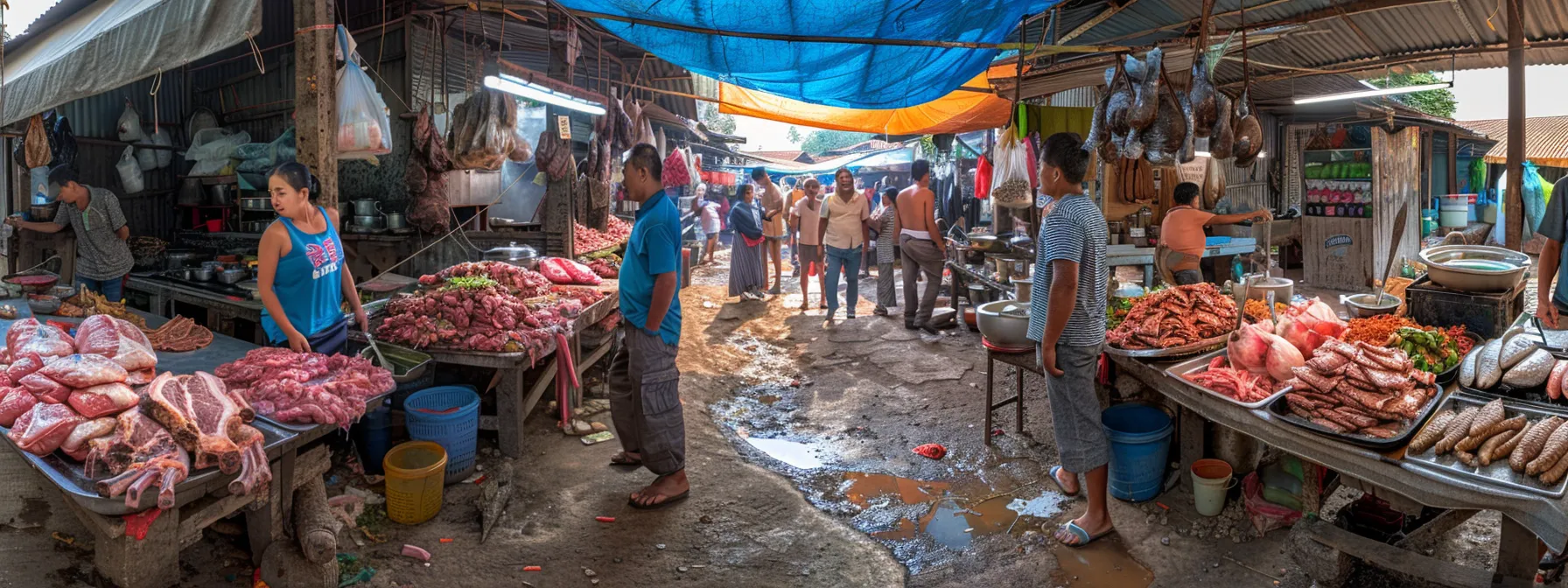
To stretch my budget while exploring Southeast Asia, I focus on several key strategies. Eating local provides delicious meat dishes at low prices, especially in bustling cities like Luang Prabang. I emphasize negotiating prices to recognize fair deals, leveraging public transportation for cost-effective travel, and discovering free or low-cost attractions amidst stunning limestone landscapes. I also manage currency exchanges wisely to minimize fees and maximize my spending power.
Eating Local: Delicious and Cheap Food Options
When traveling through Southeast Asia, I always prioritize eating local food as a delicious and budget-friendly option. Street food markets are everywhere, offering an array of affordable dishes that satisfy any craving, from fresh seafood in Langkawi to tasty laksa in Tioman Island. By choosing local eateries and markets, I not only save money but also immerse myself in the culinary culture, making my journey richer and more enjoyable: Explore South East Asia
- Explore street food markets for affordable meals.
- Focus on local dishes to taste authentic flavors.
- Use public transport to access diverse food locations.
- Be mindful of food hygiene to ensure a safe eating experience.
Negotiating Prices and Recognizing Fair Deals
When traveling in Southeast Asia, I’ve found that negotiating prices is a vital skill, especially in bustling markets or when booking activities. In cities like Da Nang, I always ask about prices for items like bottled water or souvenirs, remembering that vendors often expect a bit of bargaining. Additionally, when planning to enjoy activities such as scuba diving, I compare prices and don’t hesitate to negotiate for a better deal, which often leads to significant savings for the activities I truly want to experience. This approach not only enhances my budget-friendly travel but also engages me more deeply with the local culture, allowing me to connect with vendors along the trail of my journey.
Utilizing Public Transportation Effectively
Utilizing public transportation effectively has been a cornerstone of my budget-friendly travel strategy in Southeast Asia. Whether it’s taking local buses to explore the stunning landscapes of Da Lat or hopping on motorbikes to enjoy the rich cuisine of street vendors, I find that these options not only save money but also immerse me in local culture. Additionally, while planning my trips to UNESCO heritage sites, I always check for public transport routes to avoid inflated tourist prices and to experience the unique wildlife in the surrounding areas, making my journey both economical and enriching.
Free or Low-Cost Attractions and Activities
During my travels in Southeast Asia, I’ve discovered numerous free or low-cost attractions that offer rich cultural experiences. Visiting places like the War Remnants Museum in Ho Chi Minh City allowed me to learn about the region’s history without spending much. Additionally, exploring local markets in Mandalay lets me immerse myself in the vibrant life of the Khmer people while savoring delicious Thai cuisine at affordable prices, making for a fulfilling experience that doesn’t strain my budget, all while enjoying the area’s pleasant climate.
Managing Currency Exchanges and Avoiding Fees
Managing currency exchanges effectively is crucial for maintaining a budget while traveling through Southeast Asia. I use a debit card that offers low foreign transaction fees to withdraw local currency directly from ATMs, which typically offers better exchange rates than currency exchange booths. Additionally, I take care not to rely on tap water during my travels, especially around areas like the Mekong or Koh Rong, where I focus on purchasing bottled water to stay hydrated without compromising my health or budget.
- Use a debit card with low transaction fees for cash withdrawals.
- Avoid currency exchange booths for better rates from ATMs.
- Purchase bottled water instead of relying on tap water.
- Be mindful of local spending habits in places like Vietnam, especially in context to the Vietnam War sites.
Cultural Insights and Safety Tips for Travelers
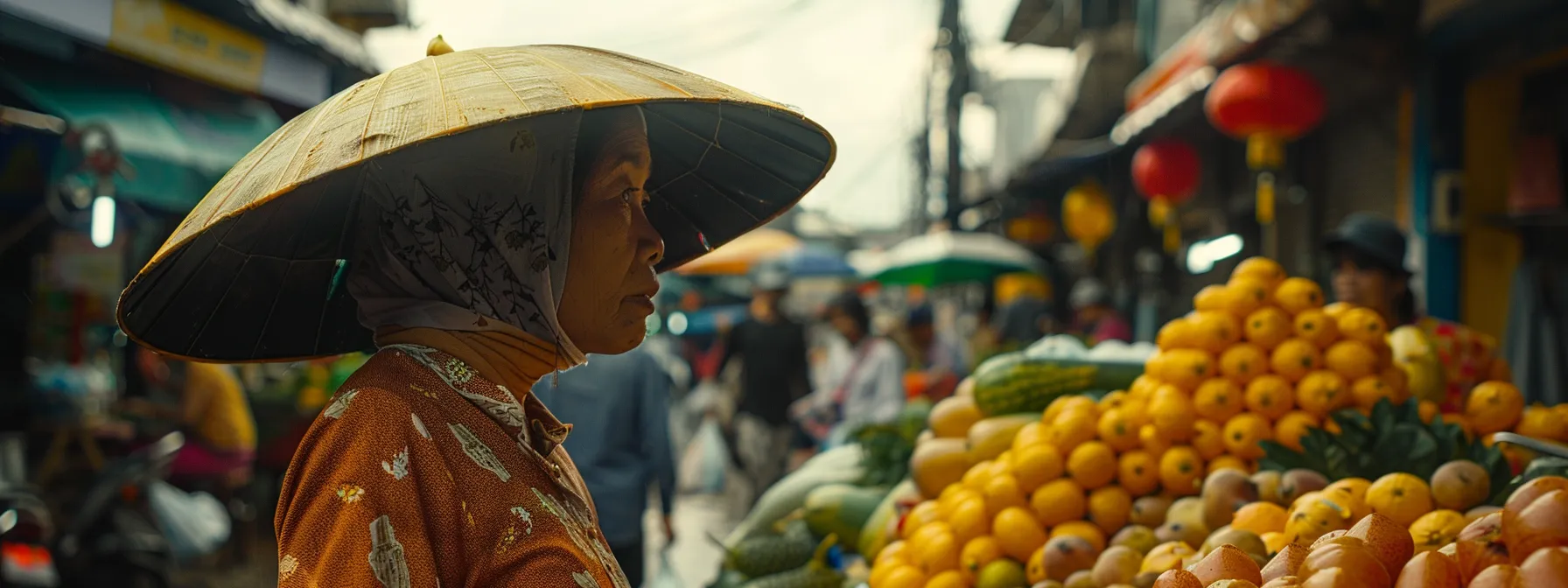
Understanding and respecting local customs is crucial during my vacation in Southeast Asia, especially when visiting significant sites like Wat Xieng Thong in Luang Prabang or exploring the vibrant streets of Phnom Penh. I also focus on staying safe in different environments, observing health precautions specific to areas like Chiang Rai. Communicating despite language barriers and embracing ethical considerations ensures my travel is responsible and enriching, benefiting both myself and local communities.
Understanding and Respecting Local Customs
When traveling through Southeast Asia, understanding and respecting local customs significantly enhances my experience and interactions. Each country has unique customs, from the traditional dress codes at temples to the practice of removing shoes before entering homes or certain establishments. For example, enjoying a plate of nasi goreng at a local eatery allows me to embrace the culture, but I ensure I observe dining etiquette and greetings to foster goodwill among the locals, which is essential in tourism.
Staying Safe in Different Environments
While traveling through Southeast Asia, staying safe in different environments is crucial for a worry-free experience. I’ve learned to be mindful in bustling cities, like Kuala Lumpur near the Petronas Towers, ensuring my belongings are secure and being aware of my surroundings. When enjoying local delicacies such as green papaya salad or navigating popular routes like the Banana Pancake Trail, I always opt for reputable travel agencies for guided experiences, especially when staying in bungalows or visiting less familiar areas where local customs and safety practices may differ significantly. Always prioritizing safety not only protects my resources but also enriches my cultural interactions throughout the journey.
Health Precautions Specific to Southeast Asia
During my travels in Southeast Asia, I make it a priority to take specific health precautions tailored to the region. Drinking bottled water is essential to avoid any waterborne illnesses, especially in areas like Vang Vieng, where cleanliness can vary. Additionally, while enjoying delicious meals from hawker stalls, I pay attention to food hygiene to minimize the risk of stomach issues. If I have a layover near Mount Bromo, I make sure to stay hydrated and protect myself from altitude sickness, which can be common in higher elevations. These practical steps help me maintain my health and fully enjoy my journey without disruptions.
Communicating Despite Language Barriers
During my travels through Southeast Asia, I’ve learned that communicating despite language barriers can be manageable and even enjoyable. In places like Battambang and Bagan, where English may not be widely spoken, I often found that simple gestures and polite interactions go a long way. Using translation apps on my phone helped bridge the gap, allowing me to ask for directions or negotiate prices while hitchhiking or exploring the stunning landscapes around these regions, all without incurring significant expenses. Embracing these moments not only enriched my experiences but also fostered connections with locals who appreciate the effort to communicate. Explore Southeast Asia
Ethical Considerations and Responsible Tourism
When I travel in Southeast Asia, I prioritize ethical considerations to ensure my adventures benefit both the local communities and the environment. I choose to eat street food from vendors who use sustainable practices, as it not only offers authentic flavors but also supports local economies. Additionally, I explore the jungle areas responsibly, opting for eco-tours that respect wildlife habitats and cultural norms, making my travels worthwhile while positively impacting the atmosphere around me: Explore South East Asia
Sample Budget Itineraries for Inspiration

In this section, I offer sample budget itineraries that cater to a variety of travel styles and durations. I’ll cover a One-Week Highlights Tour that includes iconic sites like Wat Pho and the bustling floating markets. Then, I’ll explore a Two Weeks Across Multiple Countries itinerary that encompasses diverse experiences, including the Batu Caves and visits to landlocked countries. For those seeking a deeper dive, a Month-Long Immersive Experience showcases extended stays and cultural connections. Lastly, I’ll outline Seasonal Itineraries for Different Interests and share tips on customizing your trip based on budget constraints, ensuring that every traveler finds a plan that suits their needs.
A One-Week Highlights Tour
On my One-Week Highlights Tour of Southeast Asia, I explore the stunning beaches and rich culture of southern Thailand, experiencing why it’s often considered a paradise for travelers. I start in Pakse, where I enjoy the vibrant local markets and plan a visit to nearby waterfalls that are a bucket list item for many adventurers. Continuing my journey, I venture to Borneo, immersing myself in its diverse wildlife and pristine natural landscapes, ensuring a balanced itinerary filled with relaxation and exploration: Explore South East Asia
Two Weeks Across Multiple Countries
For my two-week adventure across multiple countries in Southeast Asia, I designed an itinerary that allowed me to experience rich history, stunning beaches, and local cuisine. Starting in Phnom Penh, I explored the impact of the Pol Pot regime at the Tuol Sleng Genocide Museum before heading to the beautiful coastal city of Sihanoukville, where I relaxed on sandy beaches and indulged in fresh seafood meals at local eateries. I later ventured to Puerto Princesa in the Philippines, famous for its underground river and breathtaking landscapes, maximizing my exploration of each destination while staying budget-friendly. Explore Southeast Asia
- Explore Phnom Penh‘s historical sites.
- Relax on the beaches of Sihanoukville.
- Enjoy local meals while soaking in the vibrant culture.
- Visit the underground river in Puerto Princesa.
- Maximize your travel experience with diverse activities.
A Month-Long Immersive Experience
During my month-long immersive experience in Southeast Asia, I took the time to visit significant sites like the killing fields in Cambodia, which offered a profound insight into the region’s history. I traveled through various villages, connecting with local communities, including diverse groups such as Muslims, and gaining a deeper appreciation for their cultures. I also met fellow travellers who shared tips for exploring iconic places such as Sipadan, known for its stunning diving spots, making my journey both enriching and budget-friendly by leveraging shared experiences and local knowledge.
Seasonal Itineraries for Different Interests
When considering seasonal itineraries for different interests in Southeast Asia, I often think about the vibrant surf scene in Kuta during the dry season, which attracts many eager travelers. Alternatively, for those interested in history, a visit to the Tuol Sleng Genocide Museum in Phnom Penh offers a poignant exploration of Cambodia’s past. If I am seeking adventure, I recommend Couchsurfing as a way to connect with locals, especially when planning a trek to the stunning Ijen crater in Indonesia, where the turquoise sulfur lakes create an unforgettable experience. Utilizing resources like Rough Guides helps me formulate itineraries that suit my interests while remaining budget-friendly.
Customizing Your Trip Based on Budget Constraints
Customizing my trip based on budget constraints helps me maximize my experiences in Southeast Asia, particularly places like Palawan or Phú Quốc, where I can balance activities and costs effectively. I prioritize budget-friendly options, such as local eateries and affordable accommodations, while also exploring vibrant nightlife and engaging in activities like surfing in Kota Kinabalu. By mapping out my itinerary with these considerations, I ensure that my travels remain enriching without exceeding my budget:
- Identify low-cost destinations like Palawan and Phú Quốc.
- Explore nightlife options that suit your budget.
- Incorporate surfing or water sports in Kota Kinabalu.
- Plan daily activities that are cost-effective yet enjoyable.
After Your Trip: Reflecting and Sharing Experiences
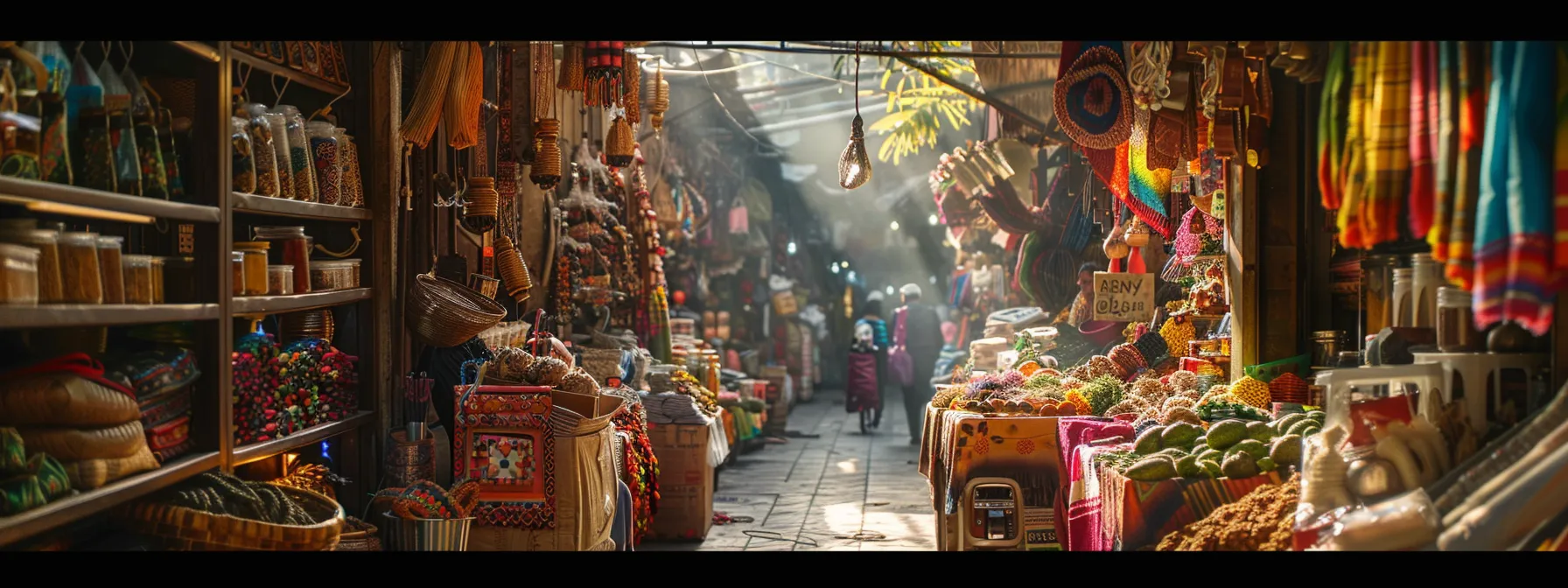
After my journey through Southeast Asia, I focus on documenting my experiences, making it easier to recall valuable lessons learned. Staying connected with the people I met enriches my travel memories while budgeting for future trips helps me save more effectively. Additionally, I enjoy sharing money-saving tips that encompass transport fees and border control insights, all while supporting sustainable tourism initiatives.
Tips for Documenting Your Journey
After my journey through Southeast Asia, I find that documenting my experiences plays a crucial role in preserving the memories I created. I often use platforms like Instagram and travel blogs to share insights from places like Ubud and Ko Tao, effectively engaging with others who seek budget-friendly travel ideas. Additionally, I make it a point to highlight practical tips such as using Grab for transportation or exploring lesser-known spots like the Cameron Highlands during the dry season, providing valuable information that can help fellow travelers plan their own adventures. Explore South East Asia
Staying Connected With People You Met
After my travels through Southeast Asia, I make it a priority to stay connected with the people I met along the way. Whether it was sharing a bowl of local soup in Nha Trang or discussing the poignant history at the killing fields, these interactions enriched my journey. I often use social media platforms to maintain friendships, exchanging stories about experiences at stunning lakes or sharing tips on local price comparisons that could benefit my travel buddies in the future. These connections not only foster new friendships but also provide valuable insights for planning my next budget-friendly adventure. Explore South East Asia
Budgeting for Future Travels
After my travels in Southeast Asia, I focus on budgeting for future adventures to ensure I can explore even more destinations. I utilize budgeting apps to track my expenses and save for upcoming trips, allowing me to set specific goals based on my travel interests. For example, I allocate funds each month dedicated to my next journey, making it possible to explore new places without financial stress.
- Utilize budgeting apps to track expenses.
- Set specific savings goals for future trips.
- Allocate funds monthly dedicated to travel.
- Research affordable destinations for budget-friendly options.
- Connect with other travelers for tips and insights.
Sharing Money-Saving Tips With Others
Sharing money-saving tips with fellow travelers enriches the travel community and helps others create amazing experiences on a budget. I often provide practical advice, like using local apps for transportation, which can significantly reduce travel costs, or suggesting affordable eateries that offer authentic cuisine. Including insights from my own journeys not only benefits others but also creates a sense of camaraderie among travelers navigating their Southeast Asia adventures:
- Utilize local transportation apps to save money.
- Explore local markets for affordable meals.
- Share experiences about budget accommodations.
- Recommend off-peak travel seasons for lower prices.
- Discuss the importance of negotiation in local markets.
Supporting Sustainable Tourism Initiatives
Supporting sustainable tourism initiatives is vital to preserving the natural beauty and cultural heritage of Southeast Asia. I often prioritize eco-friendly choices, such as staying at locally-owned accommodations that engage in responsible practices, or participating in tours focused on conservation. By sharing my experiences and encouraging other travelers to make similar choices, we collectively contribute to the protection of the environments and communities we enjoy visiting.
Conclusion
A budget-friendly travel itinerary for Southeast Asia is essential for maximizing enjoyment while minimizing expenses. By understanding local currencies, choosing off-peak seasons, and prioritizing affordable accommodations, travelers can enhance their experiences without financial strain. Utilizing local transportation and indulging in street food not only saves money but also immerses travelers in rich cultural experiences. Ultimately, these strategies empower adventurers to explore the beauty and diversity of Southeast Asia while maintaining a sustainable and responsible travel approach.
